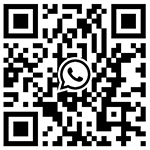Application of two-dimensional barcode in highway network toll collection
Edit: Click: Times Date:2024-10-15
Barcode is a set of bar and space symbols arranged according to a certain coding rule. It is currently the most widely used and economically practical automatic recognition technology. Common ones are one-dimensional barcodes, such as product barcodes. Although one-dimensional barcodes have significant characteristics such as high reliability, real-time and fast data collection, and standardization, their information capacity is relatively small, usually only a few tens of bytes. Their information only records the number of a certain item, and the content represented by this number needs to be determined by querying the database. Therefore, their application is limited. Two dimensional barcodes have emerged to meet the needs of applications. Common two-dimensional barcode codes include PDF417 code, Code49 code, Data Matrix code, MaxiCode code, QR code, etc. Two dimensional barcodes have been rapidly applied in various fields such as national defense, public safety, transportation, healthcare, industrial process control, commerce, finance, customs, and government management due to their large information capacity, good fault tolerance, encoding characteristics superior to one-dimensional barcodes, and high reliability in decoding.
Unlike one-dimensional barcodes that only index items, two-dimensional barcodes can provide a "description" of items, even including photos and fingerprints. Of course, they can also compile key information from a report, achieving real-time collection of larger amounts of data.
The application of two-dimensional barcodes on highways and the launch of the "Highway Network Toll Two Dimensional Barcode Pass Application Solution". Traditional highway toll collection often involves manual ticket sales, and vehicles need to buy tickets when they are on the road, and the tickets are often a combination of multiple tickets of different denominations. If the vehicle changes its destination, it needs to be reissued or refunded. With the development of computer technology, network toll collection has become inevitable. Therefore, toll tickets (cards) have emerged. When vehicles are on the road, they only need to collect the toll ticket (card) from the entrance that records the entrance information. When vehicles get off the road, they return the toll ticket (coupon), calculate the toll, and pay the fee. The media that serve as toll tickets (cards) are mainly paper magnetic coupons and non-contact IC cards, as well as magnetic cards and contact IC cards that have been used in the past. I have gradually withdrawn from this field.
Paper magnetic coupons are disposable and the earliest access coupons to be put into use, but their cost has always been high. Non contact IC cards need to be recycled and reused. In theory, IC cards can be used hundreds of thousands or even millions of times, but in practical applications, their lifespan is far lower than the theoretical value due to factors such as card damage and loss. The generally acceptable daily turnover rate in the industry now is 2 ‰ to 3 ‰, which means its actual lifespan is only about 300 times. In addition, the repeated use of IC cards poses many challenges for card allocation and tracking management, increasing operational costs. More seriously, non-contact information is not visible and must rely on devices for reading and writing, which cannot adapt to the requirements of mixed charging for both systematic and unsystematic road sections. This often results in the opening and stopping of already opened road sections to complete the integration and debugging of new systems.
The two-dimensional barcode pass scheme effectively solves the above problems. The main workflow of this plan is:
entrance
The operator inputs the vehicle model information, and the system encodes and encrypts information such as date, time, entrance station, lane, and operator number. The barcode printer generates a two-dimensional barcode based on the encrypted information, prints a two-dimensional barcode pass, and also prints relevant plaintext information.
Export
The toll collector sends the pass into the barcode reader, which automatically reads the barcode information, calculates the ticket price, displays the information, and prints out the toll receipt.
The characteristics of this plan are:
1. Simple management
Disposable, no need for tracking management, allocation, etc., effectively reducing operating costs and improving work efficiency.
2. High reliability
When carrying plaintext information that cannot be automatically read, fees can be charged based on plaintext information.
3. Strong self correction and information restoration capabilities
All non maliciously damaged passes can be read normally.
4. Strong adaptability
Suitable for online toll collection, single section toll collection, and mixed toll collection when there are both systematic and unsystematic sections.
5. Equipment standardization and high degree of universality
Both printers and readers are industrial universal products and will not rely on a single manufacturer.
6. Low cost: After the launch of this plan, it has been widely welcomed by highway management departments, research departments of the Ministry of Transport, and system developers, and even sparked a big discussion in the industry about what kind of toll tickets to use for China's highway network toll collection. In the "Interim Technical Requirements for Highway Network Toll Collection of the Ministry of Transport" (Document No. 463 [2000] of the Ministry of Transport) implemented on October 1, 2000, Article 16 clearly stipulates that within the same network toll collection area, the same type and data format of toll tickets (cards) should be used. Generally, it is advisable to choose non-contact IC cards that are reused multiple times, disposable paper magnetic coupons, or disposable paper two-dimensional barcode coupons. The upcoming national standard 'Highway Toll Collection Method' also makes similar provisions.
 Mr.Li
Mr.Li +86-13925539874
+86-13925539874





